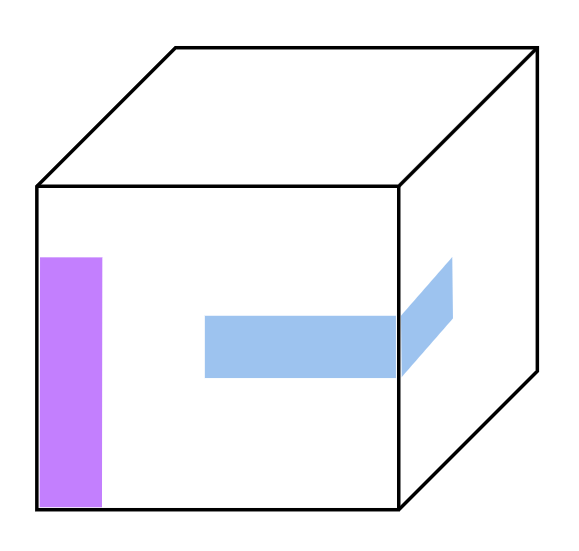Problems
(a) A picnic spot has a form of a 100 m\({}\times {}\)100 m square. Is it possible to partially cover it with non-intersecting square picnic blankets so that the total sum of their perimeters will be greater than 10,000 m?
(b) One sunny day almost every citizen came to the picnic spot from point (a). All of them brought square picnic blankets. In a local newspaper there was mentioned that the total area of grass covered with picnic blankets was greater than 20,000 m\(^2\). Do you think it was possible or did they make a mistake in their computations?
Imagine you have a cube (a box with six square sides). First, cut 16 identical colourful rectangular paper strips of any size you like (choose one size and make all 16 the same). Can you cover the entire outside surface of the cube with these strips, with no gaps and no overlapping? The strips may bend and wrap around edges and corners, but after cutting the 16 strips, you are not allowed to cut them again, and everything must stay on the cube’s surface. Is it possible? Explain why or why not. (For example, two of the strips may look like this:

The cube from Example 3 is a present and one layer of a gift-wrap is totally not enough. Can you cover it with another 15 identical rectangles? You can assume the covering from Example 3 was thin and it did not affect the shape of a cube. As before no overlappings are allowed and the surface has to be fully covered by rectangles.
Can a \(5\times5\) square checkerboard be covered by \(1\times2\) dominoes?
a) What is the answer in case we are asked to split the figure below into \(1\times4\) rectangles instead of \(1\times5\) rectangles?
(b) In the context of Example 1 what is the answer in case we are asked to split the figure into \(1\times7\) rectangles instead of \(1\times5\) rectangles?
Can you cover a \(10 \times 10\) square with \(1 \times 4\) rectangles?
Two opposite corners were removed from an \(8 \times 8\) chessboard. Can you cover this chessboard with \(1 \times 2\) rectangular blocks?
One small square of a \(10 \times 10\) square was removed. Can you cover the rest of it with 3-square \(L\)-shaped blocks?
Can you cover a \(13 \times 13\) square using two types of blocks: \(2 \times 2\) squares and \(3 \times 3\) squares?
A circle is covered with several arcs. These arcs can overlap one another, but none of them cover the entire circumference. Prove that it is always possible to select several of these arcs so that together they cover the entire circumference and add up to no more than \(720^{\circ}\).